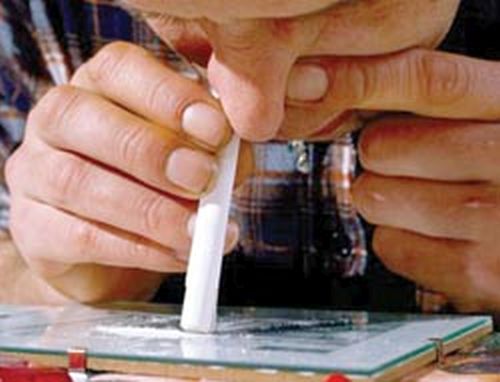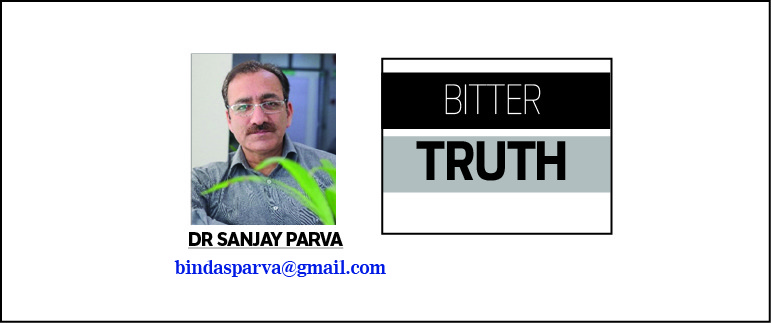By: Dr Sohail Nasti
Sri Lanka, the picturesque tear-drop shaped island in the Indian ocean, like several areas in the world which have been hit by conflict, struggles with emerging drug abuse. Drugs, especially heroin is said to have been brought to the island during the opening of Sri Lanka’s economy in the late seventies, followed by deadly conflict between LTTE and Sri Lankan army from early 1980’s till 2009.
Drug abuse has huge economic and social implications in Sri Lanka, a country of around 21 million people. Sri Lanka’s daily consumption of drugs reportedly amounts to almost $3 million—a huge burden to the economy and the finances of a small country. The social and economic cost of the conflict since 1983 has retarded the country’s development potential.
While Sri Lanka is not a producer or manufacturer of illicit drugs, with the exception of cannabis, the island country became an important hub for international drug trafficking, including opium and heroin. Sri Lanka is exposed to both the Golden Crescent (Pakistan, Afghanistan and Iran) and the Golden Triangle (Myanmar, Thailand,Vietnam and Laos), and international drug syndicates are using this advantage to make the country a transit point for drugs reaching Europe, Australia and other foreign countries.
Due to the country’s strategic location, especially on important maritime and aviation shipping routes for drugs originating mainly in India and Pakistan, the Tiger high command, it is reported, had employed drug addiction as a modality for recruiting and training its elite ‘Black Tigers’ to condition them for their suicide missions.
Though the war in island country ended with the defeat of LTTE almost a decade back, there is a risk that individuals with few skills to maintain a sustainable livelihood other than in a military or paramilitary setting may become involved in drug use or trafficking or other criminal activities.
It is estimated that there are currently about 45,000 regular users of heroin and about 600,000 users of cannabis in Sri Lanka.
During my recent visit to the country to attend a conference, where I had been invited as narcotics control expert, I observed several similarities between substance abuse in Sri Lanka and Kashmir. As a specialist in narcotics control I have been helping the governments across the world to crackdown on those who cause irreparable destruction to the youth through drugs. I had been invited by the government of Sri Lanka through the “President’s drug prevention wing” to interact with the concerned officials of the narcotics control team so as to share my experience and skills in drug prevention.
I had an interaction with the students of Eastern University of Sri Lanka located at Baticalo and during my lecture on, “Importance of creating Human Resource for Community Development” I could find several similarities between my native place Kashmir and Sri Lanka when it comes to this menace. While deadly conflict consumed thousands and thousands of lives in Sri Lanka much like Kashmir, fighting against illicit drug trafficking remains a challenge for the government in the country due to its lack of resources, both financial and human, as is the case in Kashmir.
Like Kashmir, lack of resources in Sri Lanka too is becoming an impediment in rehabilitation of the substance abusers. While the Lankan government is trying to allocate more money for the rehabilitation and reintegration programs of drug users, to handle the burgeoning number of victims remains a huge challenge. Like Kashmir, the geographical location of Sri Lanka helps in easy availability of drugs in the country.
Drug abuse becomes an integral part of the lives of people caught in an armed conflict anywhere in the world as it temporarily shields them from physical and emotional pain. It has been seen across the conflict ridden societies that drugs are also used by various parties involved in the conflict as an effective mechanism to control the actions and minds of the people, especially youth.
According to the National Dangerous Drugs Control Board (NDDCB) figuers, around 20 percent of illicit drug users in Sri Lanka are between the age of 19 and 25, and 38 percent are between the age of 26 and 35. It is also a widely known that large-scale drug dealers evade the law with the support of politicians and others with influence. Drug usage has increased in Sri Lanka and has spread even to rural parts of the country like the Valley.
And situation in Kashmir is more or less the same. Most of the drug abusers admitted to the hospital in Kashmir are between the age group of 15 a 35 years and of these 90 percent are between 15 and 25, according to officials. Sri Lankan government like our own government needs to do much more in terms of capacity-building and training officers to counter the drug trade and establish more facilities for the de-addiction process.
While Sri Lanka does not appear to be a final destination for many of the drugs transiting the country, drug abuse has spiked in recent years, prompting the government to launch ambitious measures aimed at mitigating, and possibly eliminating, drug use by 2020. Hope J&K government also launches similar programmes in the state in coming times.
Society has to put collective effort to check the menace. Schools and teachers ought to be proactive, police has to be vigilant. Preventive strategies have to be there. But as problem on hands is huge and secondary prevention in form of early diagnosis and treatment should be a high priority. Detoxification centers and long-term rehabilitation facilities are necessities and not luxuries.
(Author is founder of Mother Helpage Worldwide, and a global think tank organisation, Consortium for Global Peace. He can be reached at nastimuhammad@gmail.com)





